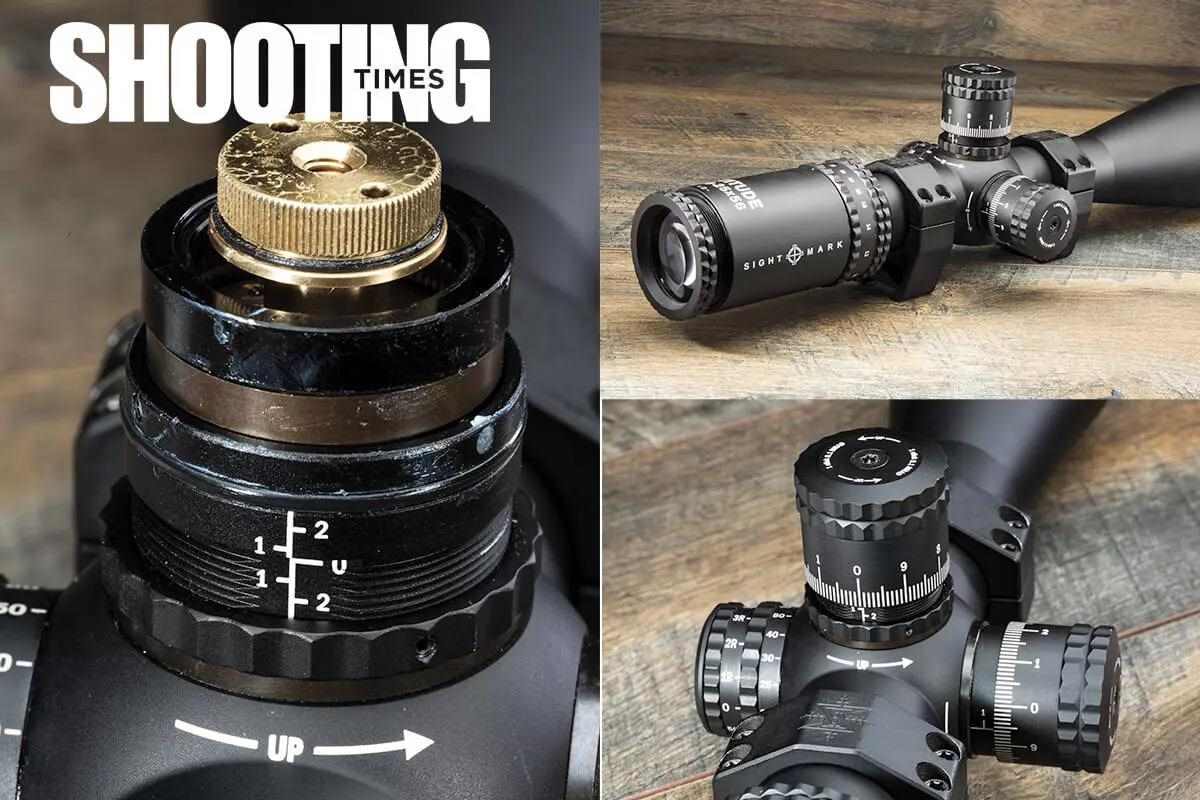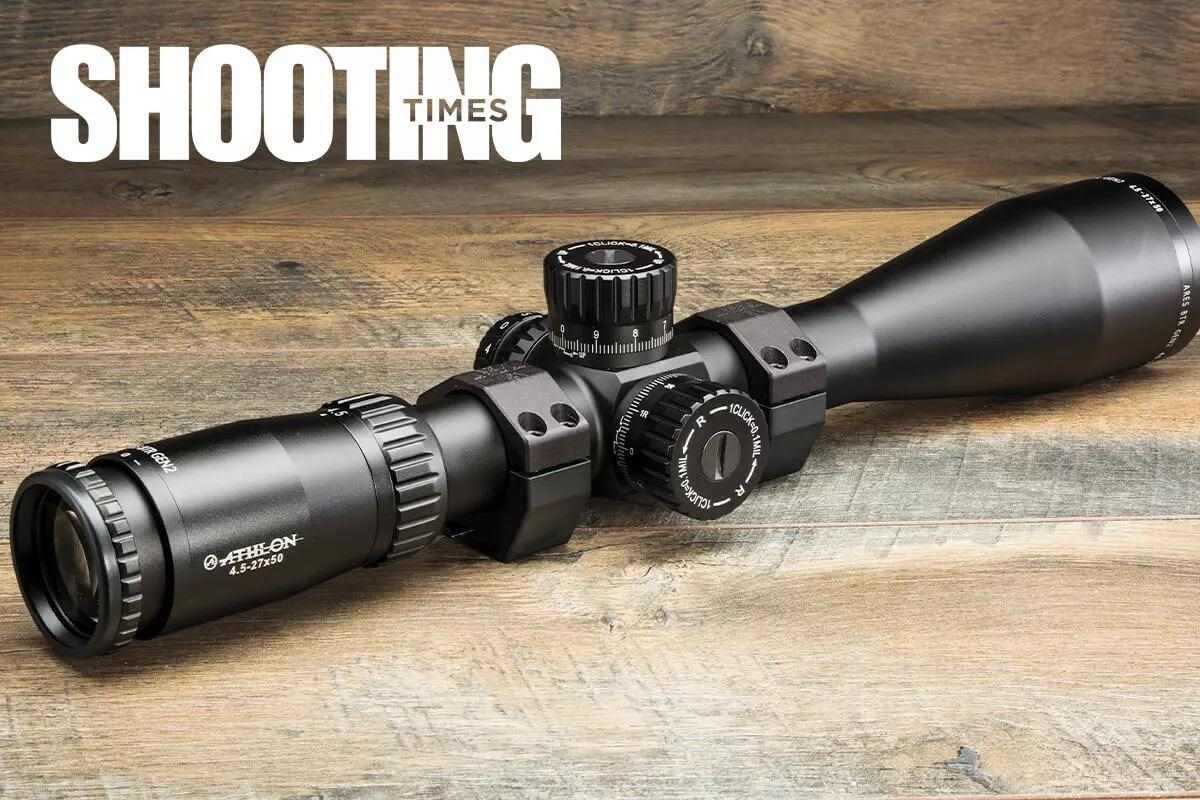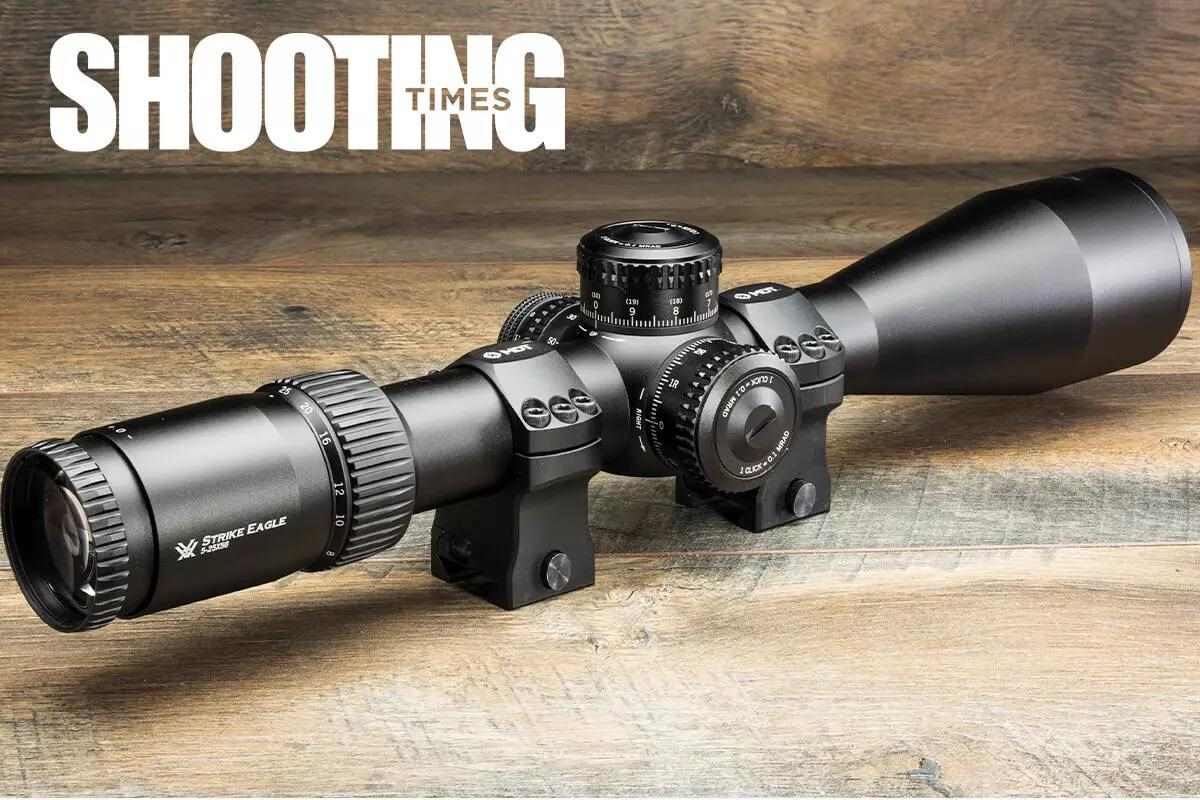
Affiliate Disclosure: This page contains affiliate links. We earn from qualifying purchases.
Just spent your money on a precision rifle and now don’t have the cash to buy a premium scope? We’ve all been there. A few years ago, I would have said, “Save your money until you can buy once and cry once.” But recently, optics companies have improved their budget-friendly lines. Being curious and dubious about this crop of new scopes, I rounded up optics that get a lot of buzz and tested them to see what ones I’d have confidence using in a competition. When choosing the criteria for PRS-style shooting, I look for low dispersion glass, a first focal plane (FFP) reticle, and a Christmas tree-style mil reticle. You can be competitive without these, but the path has its challenges. The criteria quickly narrowed the field to the Athlon BTR GEN2 HD 4.5-27×50, Arken Optics USA EP5 5-25×56, Sightmark Latitude 6.25-25×56, Primary Arms GLx 6-24×50, Riton 5 Conquer 5-25×56, and Vortex Strike Eagle 5-25×56. At $529, the Arken EP5 was substantially the least expensive of the group. The rest were between $840 and $1,087.
What’s Important for a Long Range Rifle Scope?
When scoring the scopes, I gave the most weight to glass clarity, turret tracking, and build durability. Clarity is important in finding your targets, reading wind conditions, and seeing impacts. The better the glass, the sharper the image, the wider tonality of colors, and finer details you will see. You can’t hit a target you don’t see. Reliable and repeatable tracking will give you consistent impacts shot after shot as you zip up and down the elevation. If there is slop in the turret or it fails to return to zero, it will cause misses and make you doubt your rifle’s DOPE. Without a durable build, a common bump or fall can cause the lenses to shift, erector assemblies to bind, or the turret system to go out of whack. A great warranty will not save a scope that keeps breaking. Price carried weight only after the above performance standards were met. If I can’t trust the scope, I will not recommend it, no matter the price.
Testing Scopes
Before evaluating the scopes, I meticulously leveled them, set the turrets at the optical center, and adjusted the diopter ring to get a crisp reticle. I tested the optical quality by looking at dense vegetation and trees as well as high contrast structures. The many shades of greens, browns, and grays, leaf shapes, and branch sizes tested the scope’s dynamic range, contrast, resolution, and depth of field. High contrast areas revealed any chromatic aberration. I looked at objects from 100 yards to 800 yards. I ran three head-to-head comparisons on different days under different lighting conditions and compared each scope to a $2,000 U.S.-made Burris XTR Pro. Spoiler alert: the XTR Pro was always the better scope. I tested tracking two ways, optically and physically. For the optical tracking, I have a system that is reliable and repeatable and can see .1-mil deviations. I ran elevation the full length of the reticle and the windage to 5 mils on each side of center. For physical tracking, I performed a tall target test. Using the same point of aim on a round sticker, I shot three shots then dialed 10 mils and shot again. If the shots were 36 inches apart, it tracked perfectly. If it was more or less than that, I noted the difference in a percentage. A 2 percent difference in 36 inches is an acceptable deviation. For durability, I pounded each optic on a dense material using a force similar to that of dropping a rifle. I hit the scope on all axes before performing another optical tracking test.
All of the scopes had a great image at low to mid power and on a brightly lit day. What separated the good from the best was how they performed on gray days, when looking into shadows, and when magnified beyond 12X. The scopes that found the top spots had the best images across the magnification range and in good and poor lighting conditions. The optical and tall target tests agreed with each other. The Athlon and Arken tracked perfectly in both cases, and the rest varied from 1 to 2 percent, which is acceptable and can be compensated for in a ballistic solver. All scopes passed the durability test with no effect on tracking or the reticle.
Sightmark Latitude 6.25-25×56

The Sightmark Latitude 6.25-25x56mm is a beefy scope and rated to handle .50 BMG recoil. I had an issue with this scope right out of the box. The finish was uneven and discolored. The glass fared well in bright light, but on gray days, the weaknesses came out. Some areas were sharp, and other areas were soft. During the tracking test, I noticed some backlash in the elevation turret, making it difficult to tell if I dialed 8.5 or 8.4 mils on the closely spaced turret markings. All these little things put the Sightmark at the bottom of my list.
- Glass: Low dispersion
- Tube Diameter: 34mm
- Elevation Adjustment: 31 Mils
- Windage Adjustment: 20 Mils
- Turret Features: Zero Stop
- Parallax: 20 yds., adjustable
- Eye Relief: 4.2 in. to 4.7 in.
- Reticle: PRS, illuminated
- Length: 13.77 in.
- Weight: 33.1 oz.
- Field of View: 16.1 in. to 4 ft. @ 100yds.
- MSRP: $840
Primary Arms GLx 6-24×50

The best features of this Primary Arms are the reticle, the push-button zero stop, and the knurled turret caps. The ACSS Athena BPR reticle has everything you need, including two ranging reticles, a chevron center, and .2 mil marks on its horizontal stadia. The gridded dots are the right size to not obscure your impacts. In brightly lit conditions, optical quality was very good, but with gray skies, the image started to get washed out at 9X. Above 17X, it was degraded too much to be useful. I found the eyebox finicky and would lose the image with little head movement. When you are shooting high and low positions, its beneficial to have an eyebox that is lenient with head position.
- Glass: Low dispersion, multicoated
- Tube Diameter: 30mm
- Elevation Adjustment: 17.5 mils
- Windage Adjustment: 11.6 mils
- Turret Features: Locking, zero reset, zero stop, hardened steel
- Parallax: 25 yds, infinity
- Eye Relief: 3.5 in.
- Reticle: ACSS Athena BPR mil, illuminated
- Length: 15.3 in.
- Weight: 24.5 oz.
- Field of View: 15.2 in. to 4.2 ft. @ 100 yds.
- MSRP: $850
Athlon BTR GEN2 HD 4.5-27×50

The Athlon BTR GEN2 HD with its 30mm maintube is the little riflescope that could. The glass on this scope was so similar in definition and color tones to the Vortex scope. This tells me they most likely share the same lens maker. The field of view was very close to the Vortex and Arken, which have the same magnification. When combined with the forgiving eyebox, I thought I was behind a larger scope. The scope got milky in shadowed areas around 15X and usable beyond 20X. Since the Athlon had perfect tracking, it remained a close fourth.
- Glass: HD, multicoated
- Tube Diameter: 30mm
- Elevation Adjustment: 24 mils
- Windage Adjustment: 24 mils
- Turret Features: Zero stop
- Parallax: 25 yds., infinity
- Eye Relief: 3.9 in.
- Reticle: .2 mil horiontal, .5 mil vertical
- Length: 13.8 in.
- Weight: 27.3 oz.
- Field of View: 22.7 in. to 3.8 ft.
- MSRP: $1,087
Riton 5 Conquer 5-25×56 V2

The Riton 5 Conquer 5-25×56 was introduced in May 2023 and replaced the 5 Conquer 5-25×50. I had the old model for a while, but the new version is noticeably better. Aside from a larger objective lens, the glass is improved and slightly better than the Athlon at high magnification. The image was a little milky in shadowed areas at higher power but usable to 25X. The tracking was within 2 percent of 36 inches, which is acceptable. The Riton has a slight price advantage over the Athlon, and the turret clicks felt better. It also has a quality look and feel. I wish the turret body had revolution markings.
- Glass: HD, Fully multicoated
- Tube Diameter: 34mm
- Elevation Adjustment: 31 mils
- Windage Adjustment: 31 mils
- Turret Features: Zero stop
- Parallax: 20 yds., infinity
- Eye Relief: 3.5 in.
- Reticle: PSR
- Length: 15 in.
- Weight: 37 oz.
- Field of View: 27 to 3.4 ft. @100 yds.
- MSRP: $960
Vortex Strike Eagle 5-25×56

I’ve reviewed a lot of Vortex scopes in the last two years and find they offer some of the best scopes in this category. The Vortex Strike Eagle 5-25x56mm is no different. It easily has the best edge-to-edge clarity and definition of the group. Combined with its wide field of view, the scope seems to disappear, and you feel like the image is directly in front of you. Although the image was a little washed out in shadowed areas with an increase in magnification, it was usable to 25X. Its tracking deviated by 1 percent. This is a good scope that will serve a shooter a long time.
- Glass: XD, fully multicoated
- Tube Diameter: 34mm
- Elevation Adjustment: 31 mils
- Windage Adjustment: 23 mils
- Turret Features: Locking turrets, RevStop zero system
- Parallax: 15 yds, infinity
- Eye Relief: 3.7 in.
- Reticle: EBR-7C
- Length: 14.6 in.
- Weight: 30.4 oz.
- Field of View: 24 to 5.2 ft. @ 100 yds.
- MSRP: $900
Arken Optics USA EP5 5-25×56

Right out of the box, I liked the Arken Optics USA EP5. The turrets were large with well-spaced and easy-to-read markings. The reticle is well designed and offers just the right thickness at all magnifications. My minor quip about the EP5 is that I wish it had .2 mil marks on the horizontal stadia. The Arken’s Japanese-made ED glass is almost on par with the Strike Eagle, but it takes scrutiny to notice the differences. The glass gets milky in shadowy areas at 25X, but at 20X, the image is still clear. Optical tracking was dead on. Its price makes me wonder what corners are being cut, but in the end, the EP5 earned its top spot by getting a lot of little things right. The lowest price was the cherry on top.
- Glass: Japanese ELD, multicoated
- Tube Diameter: 34mm
- Elevation Adjustment: 37 mils
- Windage Adjustment: 19 mils
- Turret Features: AZS Zero Stop
- Parallax: 25 yds., infinity
- Eye Relief: 3.4 in.
- Reticle: VPR
- Length: 14 in.
- Weight: 39.2 oz.
- Field of View: 25.3 to 4.9 ft. @100 yds.
- MSRP: $529












